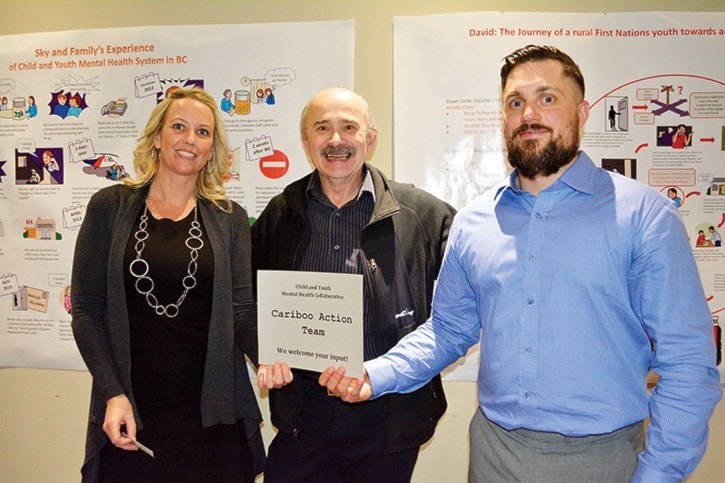Maps documenting the experiences of children and their families navigating the child and youth mental health system in B.C. are being used to help professionals and families in the Cariboo-Chilcotin.
At a recent meet and greet organized by the Cariboo Local Action Team, one of 16 in the province working as part of a large collaborative co-ordinated by the Doctors of BC and the Ministry of Health, two samples of maps were on display.
Dr. Glenn Fedor of the action team encouraged participants to give the team feedback on the maps.
“These are maps of Aboriginal youth journeys with mental health and some of the barriers they’ve faced,” Fedor told the room.
One of the maps illustrates the two-and-a-half year journey of a youth whose name has been changed to Sky.
It was developed after a facilitator with Impact BC worked with Sky’s mom.
His story begins in the fall of 2012 when at the age of 15 he tells his family he’s been cutting himself.
When his mom takes him to the family doctor he is prescribed with a sleeping medication.
Sky then shares more about his struggle with his mom. Through the next few months there are more attempts at suicide. He ends up in emergency at the hospital, followed by visits to a psychiatrist three hours away. Eventually Sky is admitted to Maples, six hours away, and returns home with better coping skills.
By January 2015, Sky had returned to school three days a week with good support from Maples outreach staff and Williams Lake teachers.
The second map on display was developed by bringing together members of the community to develop a common patient journey, encompassing the experiences of many youths.
It is called the story of David and represents the complex challenges First Nations youth and their families face when accessing current mental health services in the area.
This time the Impact BC facilitator did a series of interviews with rural First Nations service providers, community members and clinical staff who provide mental health services to the region’s rural First Nations communities.
The map incorporates the historical and present day influences of colonization, residential schooling and assimilation, intergenerational trauma, loss of territories, language and culture, systemic discrimination, and over representation of First Nations and Aboriginal people in the child and youth welfare system and the criminal justice system.
All of the mapping took place at Denisiqi Services Society on Jan. 20 and Feb. 23.
Present in the room were members of the local action team as well as additional participants from services such as the Cariboo Friendship Centre, Interior Health, School District 27, MCFD, the Tsilhqot’in National Government, Communities that care, Denisiqi services Society and First Nations service providers working in rural communities who have lived experience navigating mental health services for their families.
The first step was to tell David’s story and then map his journey through services.
As the steps in David’s journey were told, service providers and participants identified existing barriers. Through this process, the map started to take shape.
For the second session the draft map was provided to the same service providers who had been invited to come together to give input on solutions to barriers identified in the initial session.
The goal of creating the map is not only to highlight key information to help the Local Action Team achieve their goal of improving access to mental health services for children and youth in our community, but the map can also be used as a tool to invite input and further collaboration with rural First Nations communities as professionals continue to work together.
